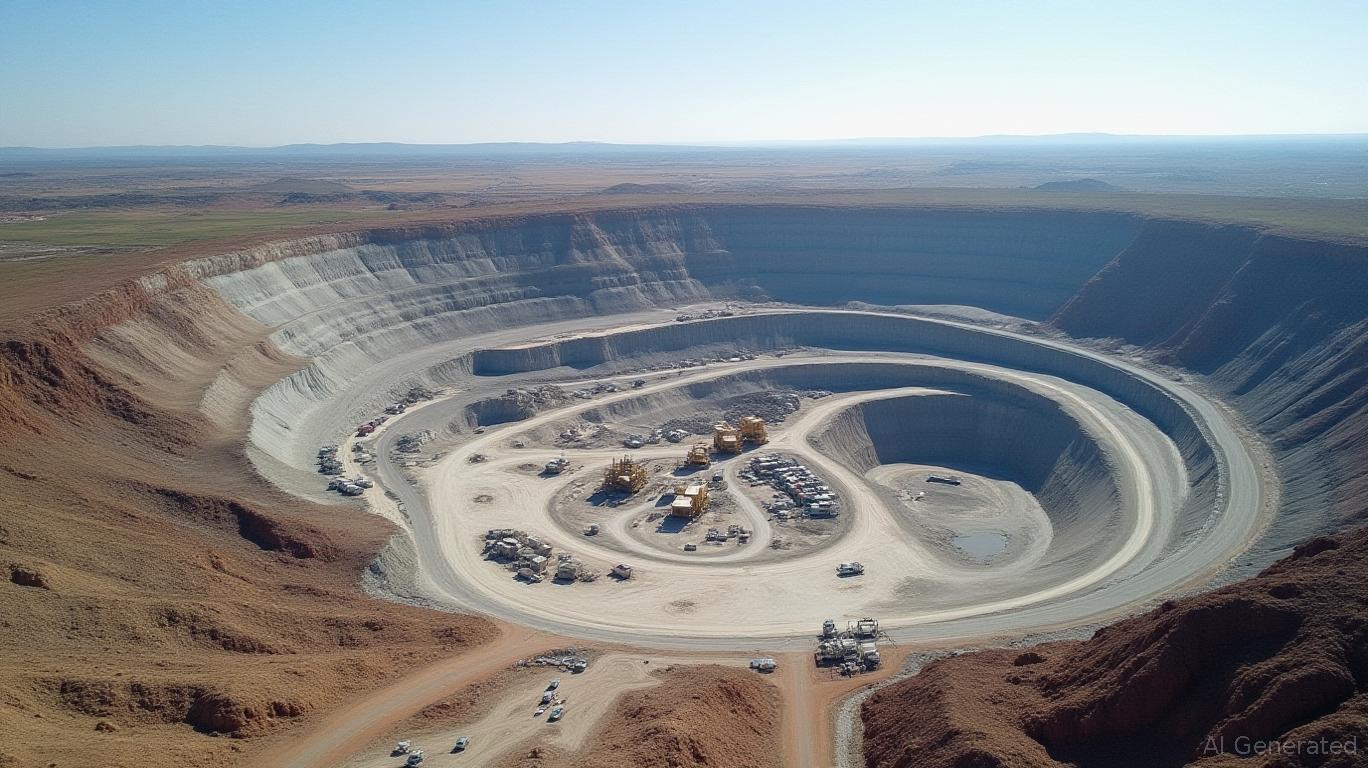First Quantum Minerals: Navigating Safety Challenges and Operational Risks in a Volatile Mining Landscape
Albert FoxMonday, Jun 23, 2025 7:05 am ET
The mining sector's success hinges on two critical pillars: operational resilience and safety. For First Quantum Minerals (FQM), a global copper producer, these pillars have been tested repeatedly, most recently by the fatal incident at its
### The Trident Fatality: A Catalyst for Immediate Action
On February 2, 2023, a dump truck collision at the Sentinel open pit of FQM's Trident mine claimed one life and left another worker severely injured. The incident triggered an immediate suspension of operations in the affected area, alongside an internal safety review and collaboration with Zambian regulators. CEO Tristan Pascall's swift acknowledgment of the tragedy and reiteration of FQM's “zero-harm” policy marked a pivotal moment. Yet, the lack of explicit regulatory penalties to date suggests either leniency from Zambian authorities or insufficient data to impose fines—a gap that could widen if future incidents occur.

### Operational Resilience: Balancing Growth and Risk
The Trident incident occurred against a backdrop of broader operational challenges for . The suspension of its flagship Cobre Panama mine in late 2023—due to disputes with Panama's government—dealt a significant blow to revenue, with the mine contributing over $500 million annually in taxes and royalties. However, FQM's response to these setbacks has been proactive. By securing over $4 billion in refinancing (including a $1.6 billion bond offering in 2024 and a $1 billion senior notes deal in 2025), the company has extended debt maturities and bolstered liquidity. Meanwhile, its Kansanshi S3 expansion project, now 83% complete, promises to add 25 million tonnes of annual processing capacity by mid-2025, offering a critical growth driver.
Despite these efforts, recurring incidents—such as a fatal accident at the Kansanshi mine in September 深知 the risks of operational complacency. While FQM has emphasized safety protocols, the pattern of fatalities underscores systemic vulnerabilities that could escalate regulatory scrutiny or erode investor trust.
### Regulatory Scrutiny and Stakeholder Confidence
FQM's safety record has become a focal point for stakeholders. The 2023 Trident incident and subsequent Kansanshi fatality have not yet led to major fines, but this may change as regulators increasingly demand accountability in the mining sector. For instance, Zambia's Mine Safety Department has intensified oversight of open-pit operations, while Panama's legal disputes highlight the risks of geopolitical friction.
Investors, too, are watching closely. FQM's Q1 2025 net loss of $23 million—attributable to restructuring costs—contrasts with its 2024 EBITDA of $1.49 billion, driven by strong copper production (431,000 tonnes). The stock's volatility reflects this duality: short-term financial strain versus long-term growth potential.
### Valuation Considerations: Risks vs. Rewards
FQM's valuation hinges on two key factors: resolution of the Cobre Panama dispute and its ability to maintain operational safety. If the mine resumes production, it could unlock $500 million+ in annual cash flows, significantly boosting FQM's valuation. Conversely, delays or a negative outcome could prolong reliance on Kansanshi and Sentinel, which face their own risks, including geological and labor challenges.
On safety, FQM's commitment to “zero harm” must be matched by tangible actions. The adoption of Hitachi's battery-powered mining trucks at Kansanshi—a move to reduce emissions and improve safety—offers a glimpse of progress. However, systemic reforms, such as real-time monitoring of equipment and mandatory safety drills, are equally vital.
### Investment Thesis: A Cautionary Optimism
FQM presents a compelling but nuanced opportunity. Its refinancing efforts and Kansanshi expansion suggest it can navigate near-term headwinds. However, recurring safety incidents and unresolved geopolitical risks introduce material downside.
For investors:
- Long-term holders might view FQM as a buy at current valuations, betting on copper's structural demand (critical for renewable energy) and eventual Cobre Panama resolution.
- Short-term traders should exercise caution; the stock's volatility and operational uncertainties favor a “wait-and-see” approach.
### Conclusion: Resilience Requires More Than Words
FQM's path to sustained success demands more than financial engineering—it requires a culture of safety embedded in every operation. While the company has demonstrated resilience through refinancing and project execution, the Trident and Kansanshi incidents serve as reminders of the sector's inherent risks. Investors must weigh FQM's growth potential against its operational liabilities, recognizing that safety failures could derail even the most ambitious strategies. For now, the stock remains a speculative play for those willing to bet on management's ability to balance growth and risk.
Final Note: Monitor FQM's progress on Cobre Panama and its safety metrics closely. A consistent improvement in both areas could unlock significant upside, while setbacks may push the stock lower.
Disclaimer: The news articles available on this platform are generated in whole or in part by artificial intelligence and may not have been reviewed or fact checked by human editors. While we make reasonable efforts to ensure the quality and accuracy of the content, we make no representations or warranties, express or implied, as to the truthfulness, reliability, completeness, or timeliness of any information provided. It is your sole responsibility to independently verify any facts, statements, or claims prior to acting upon them. Ainvest Fintech Inc expressly disclaims all liability for any loss, damage, or harm arising from the use of or reliance on AI-generated content, including but not limited to direct, indirect, incidental, or consequential damages.

Comments
No comments yet